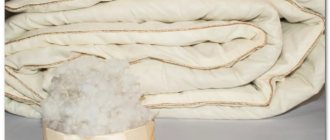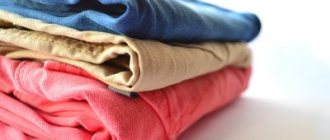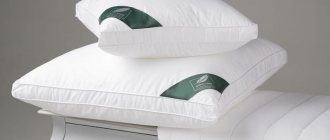Backpacks help to carry a large amount of luggage while leaving your hands free, distributing the weight evenly throughout the body. They not only help to carry textbooks to school, but are also indispensable attributes when playing sports, traveling outdoors, traveling or hiking, as well as during other events where you need to take a large number of things with you.
Of course, under such extreme operating conditions, removing stains and unpleasant odors regularly puzzles backpack owners. In this article we will tell you how to wash a backpack so that it serves you for a long time and does not lose its color.
Cleaning the backpack cavity
Before loading the product into the washing machine, it is checked for the presence of small things inside (coins, keys). Such measures are necessary to avoid negative impacts on the machine and the thing itself. If there are coins inside, they can oxidize in an aqueous environment, which can cause stains and rust to appear on the fabric. If there are crumbs and other debris, they need to be shaken out or cleaned with a vacuum cleaner.
How does the material affect the process?
School bags can be made from various materials and have a complex design . For example, a compacted back, a large number of small parts. Most models are made from several types of materials, the features of which must be taken into account when choosing a washing method:
- Leather, suede, vinyl .
School backpacks made of vinyl, artificial or natural leather, as well as suede ones are prohibited from being washed. Their cleaning should be as gentle as possible - without significant moisture and intense exposure. - Denim . This type of bag should be washed separately from other items, as denim fades easily. The spin cycle in the washing machine should be set to minimum.
- Synthetics. Synthetic material is used very often for school bags and backpacks. In most cases, such fabric tolerates washing well.
Preparation
Hooks and straps can damage the washing machine, so they must be unfastened. Other hard elements of the product are removed. For the same reason, if possible, it is better to remove plastic carabiners and latches for manual cleaning. The protruding threads on pockets, zippers, and fastenings are cut off so that they do not spoil the item during processing by catching on other parts.
Before starting the device, each contaminated area is wiped with a wet cloth. Dried dirt can cause stains on your bag when exposed to water. If there are heavily soiled areas (stains), they are removed before washing. Before the procedure, you should treat the most contaminated areas with a stain remover or laundry soap, rub with a brush and rinse. The inside of the product may also contain stains (ink, drinks). In case of heavy contamination, the bag is soaked in warm water for an hour and a half. You just need to add soap (can be grated with shavings) and baking soda.
When machine washed, the pockets and snake sections wash much less well.
Studying the manufacturer's recommendations
Any backpack must have a label from the manufacturer in the inner cavity. Almost always, this label contains information with instructions regarding washing, drying, ironing, which extends the life of the product and preserves its original appearance. The label is located in the side seam area. The explanation of the information on the label is available on the Internet; you just need to follow the recommendations.
It is important to remember that in the case of rough mechanical impact and aggressive processing mode, the structure of the fibers and the shape of the product loses its original properties. The water repellency function is disrupted and the threads will fray along the main seams. To prevent this, unauthorized choice of temperature and push-up strength is not recommended. It is unreasonable to expect a backpack to withstand elevated temperatures and twisting.
If there is no label with information on the bag, you should choose a gentle mode that does not exceed 400 rpm. Available for hand or delicate wash. Cleaning agents are selected as for delicate fabrics.
Instructions for washing the backpack
- You need to find the label on the backpack and follow the advice. If it is absent, you need to proceed to the next action.
- It is necessary to determine the material of manufacture of the product, most often it is tarpaulin or nylon, suitable for machine washing. If the material of manufacture is unknown, then you need to proceed to step No. 10.
- A backpack with several straps is washed in a special washing bag (large pillowcase) or it is turned inside out and all the straps are put inside. A bag or pillowcase is necessary so that the fasteners do not get stuck in the drum of the machine and do not damage its walls.
- Washing is performed in a gentle mode (gentle or delicate). For maximum protection of the backpack, only cold water should be used to prevent discoloration (up to 40 degrees).
- A safe powder is added and the machine is turned on. Due to the higher density of the fabric, rinsing is more difficult, so rinse aid may be required for colored items.
- The washing process must be controlled. When washing one backpack, the washing machine is unlikely to be able to balance it correctly. Then, in order to avoid distortion and imbalance in the internal compartment of the machine, the washing is paused and the correct position of the product is manually maintained so that it does not wrinkle.
- When the wash finishes, the item is removed. Remove excess water from the outside and inside using a dry cloth.
- If there is foam in the inside of the item, drying is done on a rope. A nylon product will dry quickly both in the sun and in the shade. If there is no foam or the backpack is canvas, then you can use a dryer.
- The tarpaulin product is dried on a low or medium dryer setting, which can take a long time.
- If automatic washing does not work, you should use the manual mode. The product is placed in a large container or bath.
- Rinse is in progress.
- A good spin is done.
- Drying is carried out as in step No. 8.
Recommendations and tips
You can learn how to properly machine wash a backpack by following these recommendations:
- In the absence of a label, information about the material is contained in the official website of the trademark.
- Washing uses powder, liquid or gel. The gel has a more gentle effect and is easier to rinse from the fabric structure. There is a special type of washing powder that is used to wash camping equipment. This product is not cheap, it has no odor, and does not contain disinfectants or additives.
- If using a stain remover, it is better to test it on a small part of the inside of the item.
- When the wash is finished, it is better to immediately remove the product from the drum so that mold does not appear from dampness.
- If the label contains information permitting the use of high temperatures, it is safer to maintain moderate temperatures to avoid deformation of the item and loss of color.
- Before the process, to assess the quality of painting, you need to run a wet finger over the bag. If traces of dye remain, it is better to use a product with the most gentle effect and cool water. It is advisable not to wash the item with other items.
- If the backpack has a high cost, an exclusive model and you don’t want to take risks, then you can have it professionally dry-cleaned.
- In case of loss of water-repellent properties, shine, or appearance, which are often characteristic of nylon products, a special water-repellent spray is used on the fabric to restore the water-repellent effect.
Is it possible or not?
There should be a label on the inside of the backpack indicating whether the backpack can be washed and what types of processing of the product are allowed.
Depending on the model, the following types of cleaning are possible:
- manual;
- in the washing machine;
- dry;
- dry cleaning
The latter option involves completely eliminating self-processing and transferring washing to professionals.
Dry cleaning is often used as an intermediate step before the main wash . But for some types of backpacks, it is the only way to put things in order.
To maintain a school backpack in hygienic condition, it is recommended to wash it once every 3 months.
Which backpacks are not machine washable?
Not every backpack can be machine washed. This option is not suitable for the following cases:
- Backpack with a solid frame (wooden, chipboard). Washing may cause loss of shape due to exposure to water. When using a plastic frame, stainless steel, or other moisture-resistant materials, it can be washed, but hard parts will need to be removed.
- For an orthopedic backpack, washing is not advisable because it is most likely equipped with a non-removable frame and has significant dimensions. There may not be enough space for the item in the drum, it may damage it or become deformed.
- Some backpacks have a water-repellent coating or other protective coating that prevents the penetration of water. Washing using powder will lead to a change or washing off of the composition, and the original properties will be lost.
- Leather products (as well as eco-leather items) cannot be washed. They can be wiped with a wet cloth. Contaminants are removed using a soap solution.
- If machine washing is not recommended by the manufacturer, this should be taken into account.
Machine washing is not allowed if the following is used to make the backpack:
- kondura - thickened nylon fabric made from a thread of a special structure, which has a water-repellent impregnation;
- Oxford is a synthetic material made from polyester;
- avisent - for the manufacture of the material, high-strength nylon thread using special weaving is used.
If the fabric is of unknown origin and there is no information about this on the label, then it is better not to machine wash it.
Dry cleaning
Dry cleaning will help tidy up a backpack that cannot be washed in water. The following products fall into this category:
- made of natural or artificial leather;
- vinyl;
- containing special impregnations;
- having non-removable elements that are prohibited from getting wet.
For bags that cannot be immersed in water, cleaning can be done with a soft brush and a mild soap solution. If the material is leather, then it may be enough to refresh the surface with a damp cloth.
A good assistant in cleaning a backpack made of suede, leather or textiles are cleaning foams, which can be purchased in specialized departments of household chemicals.
Among them worthy of attention:
- Silver;
- Liqui Moly;
- Saphir;
- Salton;
- Twist and others.
The main requirement is to avoid excessive moisture in the material.
Keeping it clean for long-term use
If you frequently machine wash your backpack, it may harm it. To avoid washing too often, there are a few precautions you should take:
- do not collect various rubbish inside, empty pockets, send everything unnecessary directly to the trash bin;
- do not place the bag on the ground, you can hang it;
- keep the inside clean (for example, in school backpacks, shoes and other items can be wrapped in a bag);
- Pens, felt-tip pens, drinks, and other liquids may cause stains that are difficult to remove, so you should take care of additional packaging;
- Wet wipes will help remove fresh stains and dirt.
By following these tips you can significantly increase the life of your backpack.
What to do with stains
Fresh stains from any fabric can be removed immediately with a damp sanitary napkin. Then you should wipe the affected area with a damp cloth. However, it is not always possible to do this right away. Therefore, the cleaning method depends on what the item is stained with:
- a stain of grease on a school backpack or briefcase is common; it is recommended to sprinkle it with salt, baby powder or starch and press down lightly, and after an hour, brush off the grains and wash the entire thing or wash the affected area if it is not possible to wash the whole thing;
- An anti-grease gel designed for cleaning stoves and ovens will also help remove grease;
- ink and paste from ballpoint pens can be removed with alcohol, but you can only rub products made of leather or faux leather, having first made sure that the alcohol will not damage the material; in other cases, apply a cotton wool soaked in alcohol to the stain, then carefully remove it, running along it from the edges to the center , repeat the procedure several times;
- many stains can be removed by laundry soap; you need to soap the affected area and leave for a couple of hours, and then rinse with warm water;
- Chewing gum is afraid of frost; you can easily remove it by putting your backpack in the freezer of the refrigerator for several hours, and then simply remove the gum.
Important! Before applying any product to the entire item, it must be tested on an inconspicuous area of the fabric on the back side, as well as on the back side of the plastic parts.
We recommend:
How to wash jeans in a washing machine
Proper drying of a backpack
The natural drying method for a backpack is most suitable, and it is better with open pockets so that they dry better. If the conditions outside for drying are unsuitable (rain, winter), it is not recommended to dry it in a dryer. In the room itself, the conditions for this will be much better, and it’s worth leaving the backpack to dry at home.
Do not put your backpack in the closet until it is completely dry. Leaving wet areas of the fabric can cause mildew and an unpleasant odor that may not be easy to remove.










